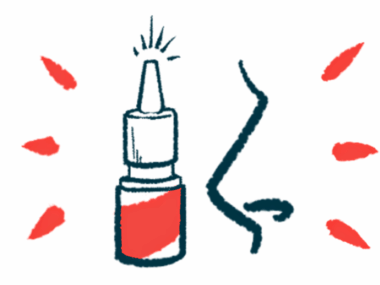MS Therapy Tecfidera Might Exert its Actions by Increasing Specific B-cells
Written by |

Editor’s note: The term B-cells is, in fact, a collective term for a group of cells having rather different properties. Some B-cells cells play a role in fighting invading pathogens or flawed cells, and can be wrongfully activated to target normal cells in autoimmune diseases. Regulatory B-cells (Bregs), instead act to counter, or regulate these immune processes. In a normal situation, regulatory B-cells play a role in ending an immune processes.
Earlier studies only looked at B-cells as a group, finding that Tecfidera decreased these cells. The new study instead studied different types of B-cells, showing that the treatment decreased ‘bad’ B-cells, while the ‘good’, regulatory B-cells increased in numbers. (Magdalena Kegel)
While treatment of relapsing-remitting multiple sclerosis (RRMS) with Tecfidera (dimethyl fumarate) keeps relapse rates low, the details of immune changes induced by the drug are still evading scientists. A new study reported that the treatment increases the number of regulatory B-cells (Bregs), presenting a potential marker of treatment response.
The study “Dimethyl fumarate treatment of relapsing-remitting multiple sclerosis influences B-cell subsets“ was published in the journal Neuroimmunology & Neuroinflammation.
Recent studies have shown that Tecfidera decreased certain immune cells, of both B-, and T-cell type in MS patients. Studies have also indicated that this class of drugs affects the signaling through IL-10, a key regulator of immune responses. This anti-inflammatory cytokine is most often released by regulatory B-, and T-cells (Tregs).
Given the uncertainty surrounding the drug mechanisms, University of Michigan Medical School researchers explored how Tecfidera treatment affected different types of B-cells in thirteen patients with RRMS and six healthy controls.
Studying B-cells in the blood before and after four to six months of treatment, the research team noted that the total number of B-cells dropped as a result of treatment. This reduction could be attributed to a loss of both naïve and memory-type B-cells since in the same period other types of B-cells – usually having immune regulatory properties – were increased in most patients.
The team analyzed the presence of two different Bregs, and noted that one type responded faster to the treatment. The other Breg type was not increased after four to six months. Eight patients were however tested also after one year, and then, six out of eight had higher levels of this regulatory cell type.
The key factor characterizing Bregs is their capacity to release the regulatory factor IL-10. The team isolated the various B-cell types from nine patients, and noted that the levels of the cytokine correlated with the number of cells in culture. This was, however, not true for two of the patients who did not produce IL-10.
While these two did not suffer relapses during the study, a lack of IL-10 production in spite of high numbers of regulatory cells might indicate that these patients have a suboptimal treatment response. Future studies involving more patients might answer this question.
Although the study included few patients, the results showed that altered B-cell responses might be part of the drug’s mechanism of action.





